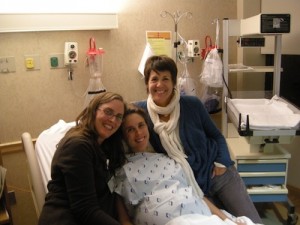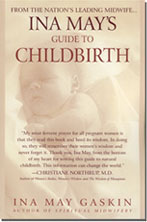Web Extras for "Taking Birth Back"
The Kids Health site offers an introduction to midwifery. The site covers the history of midwifery, what midwives do, different kinds of midwifery training, how to decide if a midwife is right for you, and how to find a midwife.
For Midwives and Future Midwives
Midwives Alliance of North America: In 1982, the Midwives Alliance of North America (MANA) was established as a professional organization for all midwives, recognizing the diversity of educational backgrounds and practice styles within the profession. Its goal is to unify and strengthen the profession of midwifery, thereby improving the quality of health care for women, babies, and communities.
As a leader in midwifery, MANA has been at the forefront of developing midwifery credentialing and educational organizations. In particular, the North American Registry of Midwives oversees a competency-based certification process for midwives, granting the title of Certified Professional Midwife (CPM) to those passing rigorous written examinations and testing of clinical experience and skills.
The Mothers Naturally site has a search engine to help locate a midwife in your area of North America.
KidsHealth.Org provides this guide to the various kinds of midwives in North America.
________________________________________________________________________________________________________
Midwife Glossary
Doula – Trained to provide women emotional and physical support in labor, birth and the postpartum period. They do not perform clinical care or diagnose and treat medical conditions.
Certified Nurse Midwife (CNM) – Trained and licensed in both nursing and midwifery, and often work in conjunction with doctors. CNMs possess at least a bachelor’s degree and are certified by the American College of Nurse Midwives.
Certified Professional Midwife (CPM) – Trained in midwifery and meets practice standards of the North American Registry of Midwives. Practice mostly in homes and birthing centers, and have no hospital privileges. Not every state allows CPMs to practice.
Direct-Entry Midwife (DEM) – DEMs are not nurses. They are trained in midwifery through self-study, apprenticeship, midwifery school or a college/university program, and may or may not have certification. They usually practice in homes and non-hospital birthing centers. Not every state allows DEMs to practice.
Lay Midwife – Educated through self-study and apprenticeships, and aren’t certified or licensed.
Certified Midwife (CM) – Trained and certified in midwifery, but not a registered nurse. Possess at least a bachelor’s degree and are certified by the American College of Nurse Midwives. Not every state recognizes certification.
________________________________________________________________________________________________
The Book that Led to Midwifery’s “Rebirth”
Ina May’s Guide to Childbirth, by Ina May Gaskin. Publishers Weekly described it this way: “Founding member and former president of the Midwives Alliance of North America and author of Spiritual Midwifery, Gaskin offers encouragement and practical advice in her upbeat and informative book on natural childbirth.”
__________________________________________________________________________
MHC Connections Are Everywhere!

The birth support team for Jainee McCarroll ’93 included midwife Catherine Clark (left) and friend Cynthia Lynch ’90. Clark’s mother is Lynn Butcher Clark ’56.
When Jainee McCarroll ’93 gave birth to son Ellis, her midwife (left) was Catherine Clark. McCarroll was surprised to learn that Clark’s mother was an MHC alumna too–Lynn Butcher Clark ’56. And McCarroll’s dear friend Cynthia Lynch ’90 (right) was her labor support from the beginning.
Suggestions from Jainee McCarroll ’93
- Ina May’s Guide to Childbirth (Most important book I read)
- Real Food For Mother and Baby (Second most important book I read)
- Hypnobirthing (Third most important book I read)
- The Birth Partner (Most important book—and only book—my husband read)
- Here is my midwife Catherine Clark’s Web site.
- Here is my postpartum doula Erica Shane’s Web site.
October 19, 2011








I really enjoy the fact that you are bringing this subject to light. I used the services of a midwife as well a year ago to create a memorable home birth and help bring to the world our daughter. You mention in the article the wonderful prenatal care that the midwives provide. How about the postnatal care? Our midwife, Colette Mercier, was on call with us for the first 6 weeks, apart from making the house visits at 1 day, 3 days, 6 days, 2 weeks and 4 weeks and the last check up of mother (!) and baby at 6 weeks. She helped me with breastfeeding, the first sniffle, the first diaper rash and the paperwork to get the child registered with the authorities (normally hospitals do that). My husband was also part of the whole process and was given information/advice/support when necessary. In short, with a midwife the birthing process became a comfortable and homey experience, before, during and after. Thank you, Ina May Gaskin, for reviving such a wonderful occupation. And thank you to all the midwives who answer their calling and make catching babies their passion.